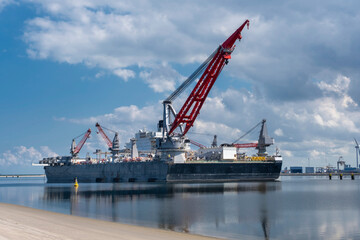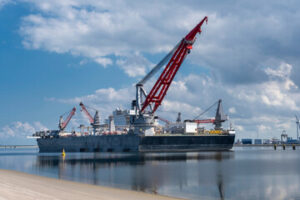Sober living is a type of residential environment that supports long-term recovery from drug addiction. These environments can range from homes to halfway houses and offer structured life skills training.
They also help individuals reestablish daily routines and responsibilities they abandoned during active addiction. These include exercise, healthy diet, and maintaining employment. Click the Relapse Prevention Exercises to know more.

Sober living is a safe environment where people who have recently completed addiction treatment can stay while they find their feet. They can learn to live without drugs or alcohol and build a life of responsibility, health, and happiness. They also have access to social events and activities to help them develop new friendships and interests. In addition, sober living homes provide resources that can help them re-enter the work force or reskill themselves for a new career.
These sober living homes can be on the campus of a recovery center or they can be independent residences. They usually have a set of house rules that must be followed and a house manager to enforce them. These rules may include curfews, guest visits, and use of technology. Residents must agree to drug tests and participate in house meetings. They are also expected to meet a certain level of financial responsibility.
Many sober livings are based on the principle of peer support. This can be a great way to encourage accountability and to make sure that participants stick with their plans for sobriety. However, it is important to note that peer support cannot substitute for formal addiction treatment. People who rely too heavily on these groups may experience relapse or other negative consequences.
In addition to providing a safe environment, sober living houses can also teach individuals how to deal with problems in their life. For example, they can help them learn to manage their finances, organize their time, and make healthy lifestyle choices. Additionally, sober living helps improve memory, which can be an important part of a person’s long-term recovery.
Unlike halfway houses, sober living homes are specifically designed for people who need transitional housing after treatment. These houses are typically staffed by professionals who can help residents cope with issues that may come up in their sobriety. They can also help with job placement and provide a space where people can start their own businesses. They can even offer educational programs that will help them get on track with their goals.
It’s a structured environment
A sober living environment provides a supportive, safe and structured place to live in recovery. It’s a great way to build a support system, and you can make friends with people who are also recovering from substance use disorder. Many of them share similar struggles and goals, and they can help keep you accountable during your recovery.
Sober living can also teach you valuable life skills. You’ll be able to learn how to manage your finances, maintain healthy relationships, and overcome relapses. In addition, you’ll be able to discover your triggers and learn how to avoid them. During your time in sober living, you’ll be able to develop a clearer picture of who you are and what makes you happy. You’ll also be more aware of what kinds of people you need in your life and who you should stay away from.
The structured environment of a sober house offers residents a daily routine, teaches them how to maintain a stable work and school schedule, and promotes accountability from other residents and staff members. Typical sober homes require residents to agree to random drug tests and to attend group support meetings on a regular basis. They also often have a curfew and other restrictions that prevent them from spending the night outside the home.
A sober living home can also provide housing stability, which is an important part of addiction treatment. Many individuals are unable to return home after completing rehab or inpatient treatment, and sober living is an ideal solution. This is especially true for those who are homeless or have unstable or unsafe housing situations.
Many people who struggle with substance abuse also deal with other mental health issues. Cooccurring mental health issues can be difficult to treat, so it’s important for those in recovery to seek out transitional options like a halfway house.
A sober living program will usually require you to find a job or volunteer in the community. This is a good way to earn income, feel a sense of purpose, and learn new social skills. They may also provide educational assistance, allowing you to sign up for college classes or get your GED. You may also be required to participate in regular therapy sessions and group meetings.
It’s a community
Sober living is an important part of recovery, and it can help you build a strong support network. In addition to your family and friends, sober living communities can provide the structure and monitoring that you need to stay on track with your sobriety goals. These communities often provide drug-free, stable housing that is conducive to recovery. They also have structured schedules and rules that promote accountability. These include daily responsibilities, curfews, and meetings with staff or peers in recovery. Some sober living homes also have strict rules about cell phone use and pets, but these policies vary from home to home.
Living in a sober house gives you the opportunity to connect with others who are in the same situation as you and share your experiences. This can be a very rewarding experience, and you may find that your sober lifestyle leads to better mental health. In turn, this can lead to a more positive social life and improved relationships with family and friends.
A sober lifestyle also offers a range of physical benefits. It can reduce your risk of serious health problems, such as liver damage and cardiovascular disease, while improving your overall health and well-being. In addition, sober living can improve your sleep patterns and help you manage your stress levels.
One of the biggest challenges that people in recovery face is maintaining sobriety while returning to their normal lives. A sober living environment provides a safe and supportive place to learn how to live independently, and it can help you get back on track with your goals and regain confidence in your sobriety.
Some sober living communities require that you complete a detox program prior to entering. Others do not, but either way, they can help you recover from substance abuse. These homes can be an excellent transitional step after rehab, and they offer a safe, supportive environment free from distractions. They can also help you find work and pursue education, as well as develop a healthy, productive lifestyle.
The basic structure of sober living homes varies slightly from place to place, but most have similar features. Most have a resident manager who oversees the house and ensures that residents comply with house rules, such as attending 12-step meetings and paying their rent. They can also encourage participation in outpatient treatment programs and mutual support groups.
It’s a place to learn
Sober living is a place to learn and grow in recovery. It helps people develop life skills and coping mechanisms to maintain sobriety. It also provides a safe environment that allows individuals to build relationships with other recovering addicts. However, many people misunderstand the concept of sober living and associate it with a jail or prison. This is largely due to the pop-culture stigma placed upon it, but many people who would benefit from sober living could never access it because they don’t understand what it is or are unwilling to admit that they need it.
The main goal of sober living is to help people develop a stable and healthy lifestyle that is free from drug and alcohol abuse. This includes practicing good eating habits, adequate exercise, and stress management. These practices can improve a person’s physical health and reduce the risk of chronic diseases such as heart disease and liver damage. They can also increase their self-esteem and quality of life.
While many people will go to a sober living home directly after treatment, others may need more time to make the transition back into their normal life. Having a supportive community can be helpful in this process, especially for those who have a history of relapse or are at high risk for relapse. It can also help them develop healthy coping strategies to deal with their triggers and stresses.
In addition to teaching a variety of life skills, sober living homes often provide relapse prevention education. These programs teach residents how to identify their own triggers and relapse warning signs. They also offer support and encouragement to residents as they work toward their recovery. Sober living homes often have staff members who live on-site and can provide advice and guidance when needed.
Sober living is a great option for individuals who are struggling with addiction and need to rebuild their lives. However, it is not a substitute for inpatient treatment. Unlike inpatient treatment, sober living is not designed to treat the underlying issues that cause addiction. Instead, it teaches people how to cope with daily struggles and build a strong support network.


